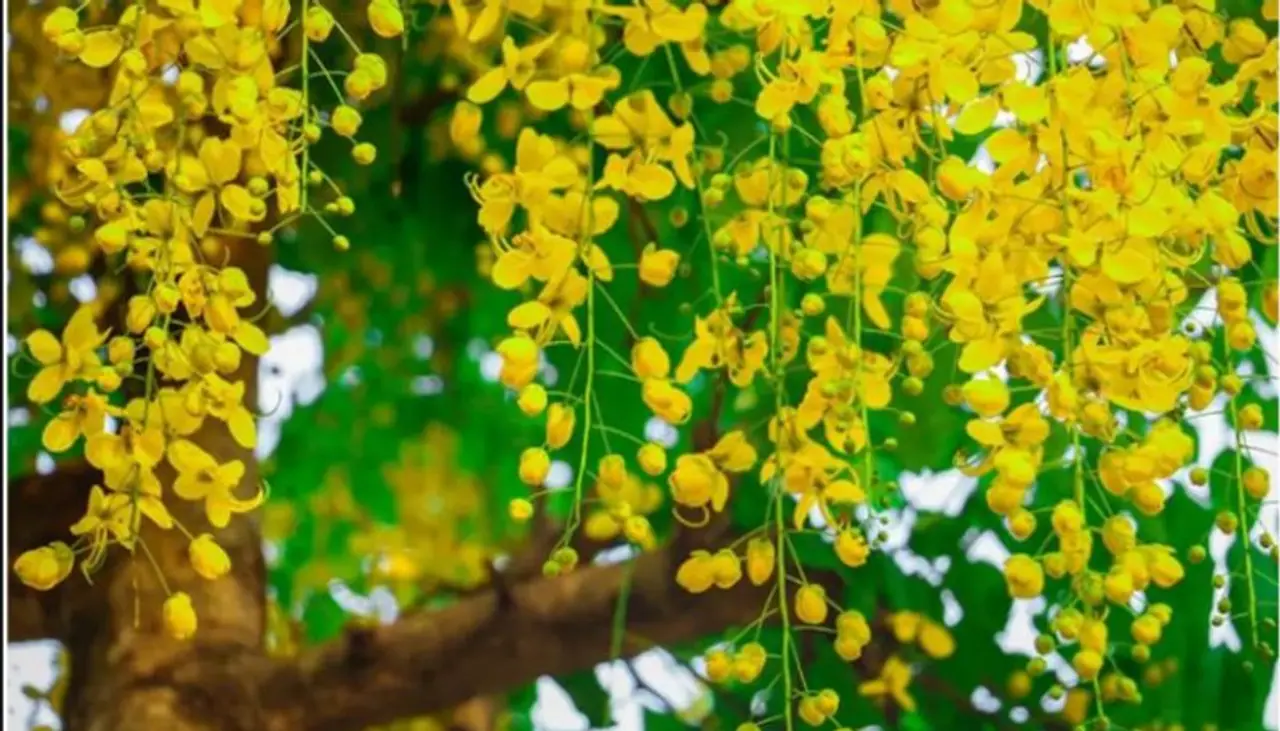Vishu's Golden Emblem: The sacred beauty of Konna flowers
No flower is more symbolic of Vishu than the Konna (Cassia Fistula) — its golden yellow blooms are synonymous with the spirit of the Malayalam New Year. Known as the “golden shower tree”, the Konna flower is not just an aesthetic delight but also holds deep cultural and spiritual significance in Kerala.

Significance of Konna in Vishu
Symbol of Prosperity: The golden color of Konna is believed to represent wealth, hope, and a bright future.
Essential to the Vishu Kani: It is a must-have in every Vishu Kani arrangement — often placed first in the uruli alongside fruits, rice, mirror, and deity.
Spiritual Connection: As Lord Krishna is often worshipped during Vishu, the golden Konna is offered at his feet as a mark of devotion.
Seasonal Bloomer: Interestingly, Konna flowers bloom exactly around Vishu (April), making it a seasonal marvel deeply tied to the festival.

Did you know?
The Konna tree is called "Kanikonna" in Malayalam and is the state flower of Kerala.
In Ayurveda, parts of the Konna plant are used for their medicinal properties — though the seeds are highly toxic if consumed raw.
It is also the national flower of Thailand, where it is associated with royalty and prosperity.
History
Legend says that Konna blooms only when it is meant to — during Vishu — regardless of climate change or inconsistent weather patterns. In local lore, it is said the Konna flower was created by the gods to herald the new year for the people of Kerala.
Visual Beauty
The golden blooms hang in long, chandelier-like clusters — often completely covering the tree’s foliage. In full bloom, a Konna tree looks like it’s drenched in sunlight, creating postcard-perfect views.
For many photographers, capturing the first sight of Konna in April is a cherished yearly ritual.
During Vishu, homes display Konna in urulis (traditional brass vessels) as a sign of reverence.
Temples, particularly those dedicated to Krishna and Vishnu, are decorated with garlands of Konna, adding to the festive spirit.
Even schools and offices incorporate the flower into seasonal displays, cultural programs, and Kani corners.
Stay updated with the Breaking News Today and Latest News from across India and around the world. Get real-time updates, in-depth analysis, and comprehensive coverage of India News, World News, Indian Defence News, Kerala News, and Karnataka News. From politics to current affairs, follow every major story as it unfolds. Download the Asianet News Official App to stay informed anytime, anywhere.